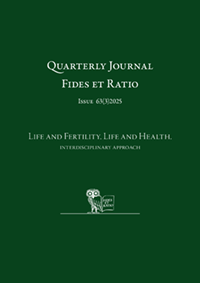Abstract
The aim of the study was to explore the features of communicative impulsivity and benevolence among older adults and to compare these features in individuals with different socio-demographic and psychological characteristics, specifically focusing on those whose communication is more or less successful. Communicative impulsivity and benevolence are personality traits that influence the success of older individuals in social interactions. The study included 263 participants aged 57 to 86. The Communicative Impulsivity Level Questionnaire by V.A. Losenkov and the Benevolence Scale by W.K. Campbell were used, alongside additional data collection on respondents’ personal characteristics. The findings revealed that most older individuals exhibit moderate levels of communicative impulsivity and benevolence, maintaining positive but selective social interactions. A statistically significant correlation was found between communicative impulsivity and success in interpersonal communication, with lower impulsivity linked to greater social engagement and life satisfaction. However, no significant correlation was found between benevolence and communication success, as communication opportunities and life satisfaction remained consistent regardless of benevolence levels. Factors such as loneliness, attitude toward life, and living conditions influence both communicative impulsivity and benevolence. Those experiencing loneliness tend to be less benevolent and more reactive to external circumstances, while older adults living with family and actively communicating demonstrate greater self-control and positivity in interactions. Employed individuals, older men, and those satisfied with their lives also exhibit better communication regulation. No significant correlations were found between these traits and age, education, place of residence, or the desire to change one’s life. A significant negative correlation was found between communicative impulsivity and benevolence, with higher impulsivity linked to lower benevolence. These findings highlight the importance of self-regulation in fostering effective interpersonal communication in old age.
References
Atchley, R. C. (1989). A continuity theory of normal aging. The Gerontologist, 29(2), 183–190. https://doi.org/10.1093/geront/29.2.183
Baltes, P. B., & Baltes, M. M. (Eds.). (1990). Successful aging: Perspectives from the behavioral sciences. Cambridge, UK: Cambridge University Press. https://doi.org/10.1017/CBO9780511665684
Brudek, P., Korulczyk, T., & Korulczyk, N. (2018). Spouses’ fit and marriage satisfaction in late adulthood. Roczniki Psychologiczne, 21(1), 69–85. https://doi.org/10.18290/rpsych.2018.21.1-5
Carstensen, L. L., Isaacowitz, D. M., & Charles, S. T. (1999). Taking time seriously: A theory of socioemotional selectivity. American Psychologist, 54(3), 165–181. https://doi.org/10.1037/0003-066X.54.3.165
Carter, R. (2015). Language and creativity: The art of common talk (1st ed.). London, UK: Routledge.
Cone, N., & Lee, J. E. (2023). Older adult communication types and emotional well-being outcomes during the COVID-19 pandemic. BMC Geriatrics, 23, 178. https://doi.org/10.1186/s12877-023-03856-8
Danziger, K. (2016). Interpersonal communication: Pergamon international library: Pergamon general psychology series. Amsterdam, Netherlands: Elsevier.
Eaves, M., & Leathers, D. G. (2017). Successful nonverbal communication: Principles and applications (5th ed.). New York, NY: Routledge. https://doi.org/10.4324/9781315542317
Fu, M., Zhang, Y., Li, X., … Chen, L. (2024). Latent profile of personality traits for American older adults and its transition during the COVID-19 pandemic. Frontiers in Psychiatry, 15, Article 1358000. https://doi.org/10.3389/fpsyt.2024.1358000
Hargie, O. (2021). Skilled interpersonal communication: Research, theory and practice (7th ed.). New York, NY: Routledge. https://doi.org/10.4324/9781003182269
Kourkouta, L., & Papathanasiou, I. V. (2014). Communication in nursing practice. Materia Socio-Medica, 26(1), 65–67. https://doi.org/10.5455/msm.2014.26.65-67
Kovalenko, O. H. (2015). Mizhosobystisne spilkuvannia osib pokhyloho viku: Psykholohichni aspekty [Interpersonal communication of the elderly: Psychological aspects]. Kyiv, Ukraine: Instytut obdarovanoi dytyny.
Labunskaja, V. A., Mendzherickaja, Ju. A., & Breus, E. D. (2001). Psihologija zatrudnennogo obshhenija: Teorija. Metody. Diagnostika. Korrekcija [Psychology of difficult communication: Theory, methods, diagnostics, correction]. Moscow, Russia: Akademija.
Levin, D. Z., Walter, J., Appleyard, M. M., & Cross, R. (2016). Relational enhancement: How the relational dimension of social capital unlocks the value of network-bridging ties. Group & Organization Management, 41(4), 415–457. https://doi.org/10.1177/1059601115574
Liao, Y., Zhou, H., Wang, Q., … Zhang, J. (2025). Could social support mediate the relationship between personality trait patterns and mental health in Chinese older adults: A nationwide cross-sectional study conducted in 2022. BMC Public Health, 25, Article 1479. https://doi.org/10.1186/s12889-025-22449-1
Lindner, S., Aschwanden, D., Zimmermann, J., & Allemand, M. (2022). How do personality traits manifest in daily life of older adults? European Journal of Ageing, 19, 131–142. https://doi.org/10.1007/s10433-020-00598-z
Lombard, D. (2021). Person-centred communication in long-term care with older people: A scoping review. Journal of Integrated Care, 29(3), 306–333. https://doi.org/10.1108/JICA-10-2020-0070
Losenkov, V. A. (2015, May 21). Diagnostika potenciala kommunikativnoj impul’sivnosti [Diagnosis of the potential of communicative impulsivity]. Retrieved from https://www.defectolog.by/content/diagnostika-potenciala-kommunikativnoy-impulsivnosti-valosenkov
McCann, R. (2017, September 26). Communication, aging, and culture. In Oxford research encyclopedia of communication. Retrieved February 20, 2025, from https://oxfordre.com/communication/view/10.1093/acrefore/9780190228613.001.0001/acrefore-9780190228613-e-753
Perrone-McGovern, K. M., Oliveira-Silva, P., Simon-Dack, S., Lefdahl-Davis, E., Adams, D., Hahn, L., … Gonçalves, O. F. (2014). Effects of empathy and conflict resolution strategies on psychophysiological arousal and satisfaction in romantic relationships. Applied Psychophysiology and Biofeedback, 39, 19–25. https://doi.org/10.1007/s10484-013-9237-2
Pocnet, C., Popp, J., & Jopp, D. (2021). The power of personality in successful ageing: A comprehensive review of larger quantitative studies. European Journal of Ageing, 18, 269–285. https://doi.org/10.1007/s10433-020-00575-6
Rahim, M. A. (2023). Managing conflict in organizations. New York, NY: Routledge. https://doi.org/10.4324/9781003285861
Reichstadt, J., Sengupta, G., Depp, C. A., Palinkas, L. A., & Jeste, D. V. (2010). Older adults’ perspectives on successful aging: Qualitative interviews. The American Journal of Geriatric Psychiatry, 18(7), 567–575. https://doi.org/10.1097/JGP.0b013e3181e040bb
Stavrova, O., Ren, D., & Pronk, T. (2021). Low self-control: A hidden cause of loneliness? Personality and Social Psychology Bulletin, 48(3), 347–362. https://doi.org/10.1177/01461672211007228
Tan, X. R., Wilson, I. M., Tay, P. K. C., Win, P. P. S., Song, C. F., & Wee, S. L. (2024). Mapping of technological strategies for reducing social isolation in homebound older adults: A scoping review. Archives of Gerontology and Geriatrics, 125, 105478. https://doi.org/10.1016/j.archger.2024.105478
Walker, J. (2023). Interpersonal communication. In Keys to communication: An essential guide to communication in the real world. Retrieved November 10, 2024, from https://pressbooks.pub/umcoms101/chapter/chapter-6-interpersonal-communication/

This work is licensed under a Creative Commons Attribution-NonCommercial-NoDerivatives 4.0 International License.
Copyright (c) 2025 Quarterly Journal Fides et Ratio

